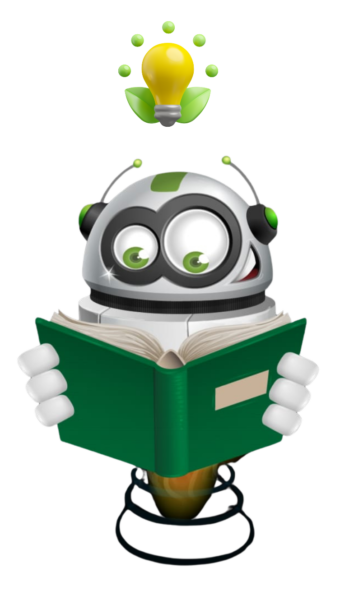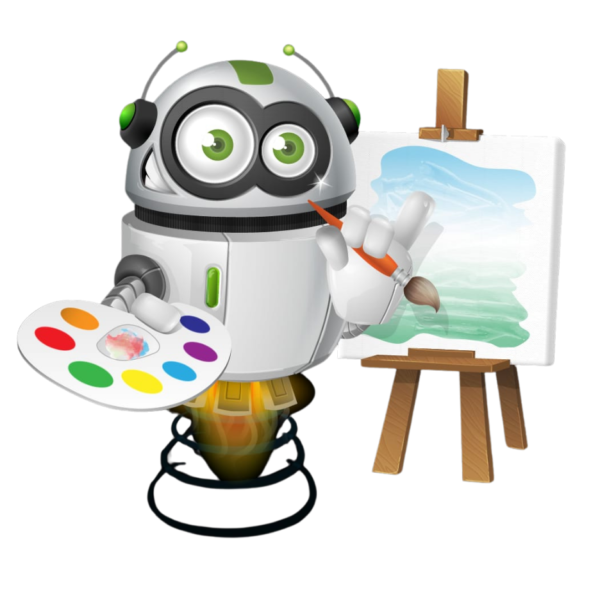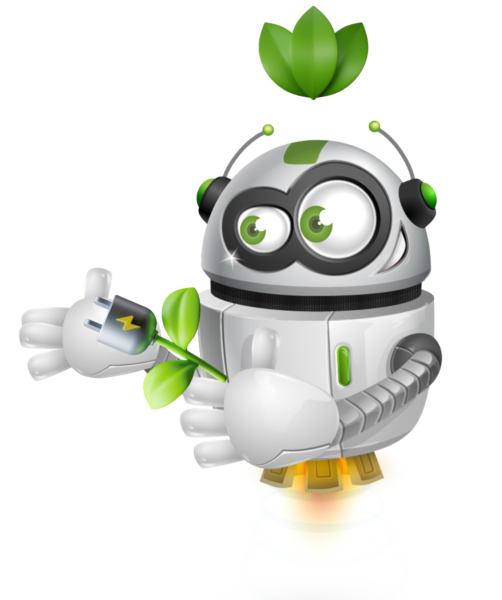
Aile World School
Where Education Meets Innovation and Sustainability
Primary Stage
Aile World School offers International Primary curriculum that can provide a broad and balanced education for learners, helping them to thrive throughout their schooling, work, and life. With seven subjects to choose from, including English, mathematics, and science, there are plenty of opportunities to develop creativity, expression, and wellbeing in a variety of ways.
The curriculum is flexible, allowing you to shape it around how you want your child to learn. Subjects can be offered in any combination and adapted to suit your context, culture, and ethos.
This International Primary curriculum is designed to cater children aged 5 to 11, and it is structured to provide a thorough and multifaceted educational experience, emphasizing both academic diversity and language mastery. Core subjects include English, Mathematics, Science, Humanities, Creative Media, and STEM that is catered around sustainable principles and practices. To complement this core curriculum, students have the option to pursue additional subjects to broaden their knowledge and skills.
In alignment with our commitment to a comprehensive education, students can select a core language option, by incorporating English as the Language of Instruction, Mother Tongue language retention, and the acquisition of a Foreign Language.

Our curriculum not only cultivates linguistic agility but also equips students with the cultural sensitivity and awareness needed for thriving in our interconnected world.
Furthermore, Quran Studies is also offered, which allows a deep understanding of the Quranic text, its teachings, and historical context, while also fostering intercultural understanding and ethical reflection.
Aile World School curriculum for primary is structured to engage students in a learning process that is both stimulating and accommodating to different learning styles. The key aspects include:
- Comprehensive Subject Offering: With subjects ranging from the core elements of English, Mathematics, and Science to the Arts, Languages, IT, STEM, Social Studies, PMH or religion education, students are encouraged to explore various fields. This approach nurtures a more complete educational experience that touches upon different areas of knowledge and personal interest.
- Adaptable Content: The inherent adaptability of the International Primary Curriculum means that it can be molded to fit the specific needs and the cultural background of the student body. This helps ensure that learning is not only globally relevant but also locally resonant and respectful of the cultural milieu in which the students are being educated.
- Development of Key Skills: Beyond academic knowledge, the curriculum emphasizes the importance of developing key life skills such as critical thinking, problem-solving, teamwork, and adaptability. These skills are crucial in preparing students for the complexities of the modern world.
- Personal Growth: The curriculum fosters personal growth by emphasizing creative expression, physical development, and emotional wellbeing. Through this holistic approach, students are equipped with not just educational learning but also the personal attributes required for personal fulfillment and success in various life domains.
- Global and Local Balance: By offering an international perspective while still allowing space for local educational standards and cultural narratives, this curriculum presents an education that is both globally conscious and locally grounded.
- Progressive Assessment: The International Primary Curriculum often includes continual assessment strategies that provide regular insights into students’ progress. This allows for timely interventions and support tailored to individual learning needs, ensuring that each student can advance at a pace suited to their abilities and comprehension.
- Preparation for Secondary Education: A curriculum with an international scope lays a strong foundation for secondary education, which often follows similar principles of broad knowledge, skill development, and preparation for the global stage. This continuity is vital in maintaining educational progression and coherence.
Core Subjects
1. English Language
The English language curriculum for our primary program is structured to promote high standards of language and literacy by equipping students with a strong command of the spoken and written word. The curriculum for English reflects the importance of developing students’ competence in these two key areas, as well as their love of literature, through widespread reading for enjoyment.
Reading:
- Phonics: At the foundation stage, particularly in Key Stage 1, there is a strong emphasis on phonics to help with word recognition and pronunciation.
- Comprehension: Pupils are taught to understand and discuss both the written word and texts that they hear, building the skills needed to express an informed response.
Writing:
- Transcription (Spelling and Handwriting): Pupils learn how to write down their ideas with correct spelling and legible handwriting.
- Composition: This focuses on articulating ideas and structuring them in speech and writing.
Grammar and Vocabulary:
- Pupils learn age-appropriate grammar and expand their vocabulary to be able to express themselves clearly and effectively.
Spoken Language:
- Pupils are encouraged to speak confidently and effectively, developing their verbal articulation as well as their listening skills.
Literature:
- Throughout Primary Stage, students are introduced to a wide range of poetry, stories, and non-fiction. The diversity of literature studied is designed to cultivate an appreciation for reading, stimulate imagination, and provide models for pupils’ own writing.
Progression:
- The curriculum also underlines the clear progression of skills, with the expectation that as pupils move through the stages, they will build on their skills and knowledge incrementally. They should be able to read fluently and with good understanding, drafting and writing in a coherent and organized manner, and should be able to control their speaking and writing consciously, adapting language and style for an array of contexts.
Assessment:
- Assessment in English works to ensure that by the end of each Primary Stage, pupils have reached the expected educational Globle standards in reading, writing, and spoken English language. Pupils are equipped not just for secondary education but are instilled with linguistic skills that are crucial for everyday life, continuous learning, and work.
2. Mathmatics
The mathematics curriculum for primary program aims to provide pupils with a deep understanding of the subject through a combination of practical experience and abstract reasoning. Pupils are encouraged to develop a sense of number, carry out calculations, and understand the underlying principles of the operations they perform. The curriculum is built around the following core areas:
Key Topics and Skills:
- Number – including Number Sense, Place Value, and Operations: Pupils develop an understanding of numbers, learn to read, write, order and compare numbers, and develop skills in addition, subtraction, multiplication, and division.
- Fractions (including Decimals from level 4 onwards): Introducing the concept of fractions and how to calculate with them, including the use of decimals and percentages at higher primary levels.
- Measurement: This involves learning how to measure and calculate with different units, understand and use approximate equivalences, and learn how to read and tell the time.
- Geometry – Properties of Shapes and Position and Direction: Students learn to recognize, describe, draw, compare, and sort different shapes and use the related vocabulary. Position and direction involve learning about movement and positions and how to describe them.
- Statistics (introduced in level 3): Introduces data interpretation and representation, including the use of charts, graphs, and tables.
- Problem Solving, Reasoning, and Algebra: While not addressed as separate topics until later key stages, problem-solving and reasoning are woven into each area of the curriculum, with pupils encouraged to use their mathematical skills to solve problems and to think logically. Algebraic thinking starts to emerge in level 3, preparing students for more complex mathematical studies.
- Cross-Curricular Links: The curriculum encourages applying mathematical skills in other subjects and contexts, thus enriching pupils’ understanding and utility of mathematics in the real world.

Progression:
- The curriculum ensures a clear progression in mathematical understanding from the early years through the end of level 4. By the end of primary program, pupils should be able to apply arithmetic fluently, carry out complex problem-solving tasks, and reason mathematically.
Assessment:
- Regular assessment is integrated into the curriculum to monitor progress and address any areas of difficulty.
3. Science
The science curriculum for primary program imparts a fundamental understanding of the scientific world through teaching interdisciplinary scientific concepts and fostering a sense of inquiry and fascination with natural phenomena. This curriculum is aimed at setting up a groundwork for scientific knowledge and curiosity which pupils will carry through to their further education and beyond. The curriculum is structured to provide a balance of knowledge-based learning and hands-on experience with ‘Working Scientifically’ skills integrated throughout. Here is a broad overview:
Key Topics:
Biology:
- Plants and Ecosystems: Identifying parts and their functions, requirements for life and growth.
- Animals, Including Humans: Understanding basic body parts, survival needs, reproduction, and life cycles.
- Living Things and Their Habitats: Exploring environmental diversity and species interdependence.
Chemistry:
- Materials and Recycling: Investigating properties of everyday materials, changes and reactions.
- States of Matter: Solid, liquid, gases, understanding processes such as freezing, melting, condensation.
- Environmental pollution and solutions: Pollution empact, the importance of recycling, and the science behind waste reduction.
Physics:
- Seasonal Changes: Observing weather changes throughout the seasons.
- Forces and Magnets: Looking at contact and distant forces, magnetic behavior, and purpose (Key Stage 2).
- Sound and Light: Exploring how sound is made, how it travels, how shadows form and light is seen (Key Stage 2).
- Electricity: Basics of electrical circuits and safety (introduced in Key Stage 2).
- Renewable Energy and Conservation: Learning about principles of energy conservation and energy-efficient technologies.
- Earth and Space Education Aligned with Ecological Awareness: Exploring Earth’s place in the solar system with a focus on environmental cycles and the implications of space exploration on sustainability.
Green Focus:
- Our students engage in inquiry-based learning, carrying out experiments and investigations that connect with real-life environmental challenges. This encourages them to develop solutions and become proactive agents of change.
Cross-Curricular Sustainability:
- We harness the power of cross-disciplinary learning by incorporating elements of math, technology, and language arts into our science curriculum, supporting our ethos of connected learning and holistic development.
Environmental Stewardship:
- Students begin with simpler concepts such as understanding the local environment and progress to complex terms.
Assessment:
- Regular assessment is integrated into the curriculum to monitor progress and address any areas of difficulty.
Further
4. Digital Art and Creative Media
Digital Art and Creative Media is an evolving field that integrates traditional arts education with contemporary digital technology. The goal is to foster creative thinking and develop digital fluency. Pupils are encouraged to explore and play with a variety of digital tools and media, creating art that reflects their understanding of the world and their place in it. The digital element of Art and Creative Media is adapted to be age-appropriate.
Key Components:
- Digital Creation and Manipulation: Students learn to create digital images and artwork using software and apps designed for drawing, painting, and photo manipulation.
- Animation and Graphic Design: Students are introduced to basic animation techniques and graphic design principles, creating digital stories or informational graphics.
- Understanding Digital Media: Beyond creation, students develop critical skills to understand and interpret media messages encountered in digital form.
- Online Safety and Digital Citizenship: Responsible use of digital tools and understanding the implications of sharing content online.
Progression:
- At level 1, students might start with simple drawing programs and storybook creation tools to illustrate their ideas. As they advance to level 3, they might engage with more sophisticated software, engaging in basic coding for interactivity, producing simple animations, or editing videos.
Cross-Curricular Links:
- Digital Art and Creative Media is inherently interdisciplinary, often linked with subjects like ICT (Information and Communications Technology), Lnguage studies (for storytelling), and even subjects like Social Studies where digital presentations can enhance learning.
Assessment:
- In line with the overall curriculum for Art and Design, assessment in Digital Art and Creative Media is usually formative, with teachers observing and guiding pupils’ progress through various projects and providing feedback that helps refine their skills and understanding.
While still an emerging field in primary education, the inclusion of Digital Art and Creative Media in the curriculum reflects a commitment to preparing students for a future in which digital literacy is as fundamental as traditional literacy and numeracy. It is an exciting area where the artistic and creative capacities of students can be nurtured alongside critical technical skills.
5. Art And Design
The second part of Art and Design curriculum is deliverd by Green Hubs for their suitable equipment and atmospherethey offer for students to express their creativity, and for its role in developing a broad range of skills in problem-solving, critical thinking, and understanding of historical and cultural contexts. They offer visual, tactile, and sensory experiences for students and a unique way of understanding and responding to the world. Pupils will use color, form, texture, pattern, and different materials and processes to communicate what they see, feel, and think of their surrounding environment and beyond.

Key Components:
- Creating Art: Students are encouraged to use a range of materials creatively to design and make products. Further, they are taught the skills to draw, paint, and sculpt, as well as use other art, craft and design techniques.
- Developing Ideas: Students develop their ideas through discussions and planned drawing and by exploring the work of other artists.
- Evaluating: Children learn to evaluate and analyze creative works using the language of art.
- Knowledge of Artists and Cultural Art: The curriculum includes learning about great artists, architects, and designers in history. Also major part will focus on cultural arts like folk art or traditional art depending on the location of your chosen green hub.
Progression:
- Throughout level 1 and 2, students are given opportunities to explore different media and techniques and begin to learn about some cultural arts and famous artists. Beyond, children build upon this foundation by developing their techniques further, including their control and their use of materials. They also start to think critically about the wider context of the art they study and produce.
The nature of Art and Design activities in Green Hubs celebrate individual expression and the development of personal inventiveness, often allowing students a break from the more ‘academic’ subjects and providing a diverse and holistic activities’ experience.
6. STEM
Aile World School embraces a holistic approach to STEM (Science, Technology, Engineering, and Mathematics) education, which aligns with our philosophy of fostering environmental consciousness, sustainability, and global connectedness. The STEM curriculum is integrated throughout primary program, with a unique focus on projects and practices that prioritize ecological awareness and innovation.
The aim is to cultivate a generation of students who are not only well-versed in STEM subjects but are also equipped to apply this knowledge to address the challenges of environmental stewardship and sustainable development.
Key Components:
- Interdisciplinary Projects: STEM at Aile World School often takes the form of thematic projects that require students to apply skills from all four disciplines in a way that connects back to environmental and sustainability issues.
- Inquiry-Based Learning: The curriculum encourages students to ask questions, explore different solutions, and engage in hands-on experimentation, reflecting our commitment to discovery and innovation.
- Environmental Focus in Science and Mathematics: Science lessons include the study of ecosystems, biodiversity, and climate, while Mathematics incorporates real-world data analysis related to natural resources and sustainability metrics.
- Technology and Engineering for Good: Technology education revolves around using digital tools to solve environmental challenges, and Engineering is focused on designing solutions that improve sustainability, such as renewable energy systems or waste management technologies.
Green Hub Activities:
- Within the Green Hubs, practical STEM education is brought to life through activities like maintaining a garden to learn biological sciences, building models of sustainable houses, or coding sensors to monitor environmental conditions.
Cross-Curricular Links:
- A robust STEM curriculum at Aile World School is not isolated. It includes language arts to promote communication of scientific ideas and social studies to ensure students understand the societal impacts of STEM advancements.
Assessment:
- Continuous assessment strategies are employed, focusing on students’ abilities to apply STEM knowledge practically, to think critically about environmental issues, and to work collaboratively on creative solutions.
Our STEM education aspires to equip students with crucial 21st-century skills and the mindset to be proactive, informed contributors to a sustainable planet.
7. Mother tounge and Foreign Languages
The curricula for Mother Tongue and Foreign Languages at World Green Hub School are woven into our philosophy which values linguistic diversity, cultural richness, and sustainable global citizenship. Both curricula are designed to maintain strong cultural connections and to foster international mindedness through language learning.
Mother Tongue Curriculum
The Mother Tongue program endeavors to instill a high command of the native language in spoken and written forms, much like the Global English curriculum, enveloping not just literacy but also cultural heritage within the linguistic education. It starts from level 1 and builds through higher levels, aligning with progression in English literacy.
Key Topics and Skills:
Reading:
- Fostering a lifelong love of reading and in-depth understanding of literature in the Mother Tongue.
- Vocabulary expansion through diverse and culturally rich texts.
Writing:
- Composition skills focus on clear, coherent expression reflective of individual thought.
- Mastery of grammar, punctuation, and syntax native to the Mother Tongue.
Spoken Language:
- Developing cognitive, interpersonal, and expressive abilities through effective verbal communication.
Foreign Language Curriculum
The Foreign Language program is crafted to broaden pupils’ linguistic repertoire, promoting the acquisition of a new language to prepare them for their role as global citizens who can navigate diverse cultures. Foreign language acquisition begins at level 3 with foundational vocabulary and phrases, evolving into more sophisticated language structures and usage at higher levels.

Key Topics and Skills:
- Basic Communication: Acquisition of foundational language skills around familiar topics and daily life.
- Cultural Appreciation: Exploring and understanding cultures associated with the foreign language to build intercultural competency.
- Language Expansion: Systematic vocabulary building and the introduction of essential grammatical structures to develop fluency and comprehension.
Integration:
- Both the Mother Tongue and Foreign Languages curricula incorporate themes of sustainability, environmental awareness, and cultural respect. Students are regularly engaged in projects and discussions that link language learning with global issues and our interconnected world.
Cross-Curricular Links:
- Language learning is linked with other subjects, encouraging students to apply their language skills in various contexts, thereby enhancing their overall educational experience.
8. Social Studies
Aile World School’s Social Studies curriculum embodies our global and international outlook, tailored to foster an understanding of diverse cultures, global interdependence, and the importance of sustainable living. Reflecting the core values of our school philosophy, the curriculum aims to cultivate informed, responsible citizens who are equipped to think critically about the complexities of the modern world.
The curriculum seeks to provide students with a comprehensive understanding of societal structures, historical events, geography, economics, and civics from a global perspective. It emphasizes the interconnectedness of human experiences and the impact of individual and collective actions on the world’s social and environmental health, tailoring content to be age-appropriate and progressively more complex as students mature.
Curriculum Highlights:
- Global Awareness: Topics cover a wide range of global issues, such as climate change, poverty, migration, and cultural diversity, encouraging students to develop a sense of empathy and global citizenship.
- Sustainability and the Environment: Exploration of sustainable development goals, renewable energy, and conservation efforts worldwide, with an emphasis on the role individuals and communities play in promoting a sustainable future.
- Cultural Studies: Deep dives into various cultures and lifestyles, examining traditions, languages, religions, and arts to foster respect and appreciation for diversity.
- Historical Perspectives: A comprehensive look at significant global historical events and figures, helping students to understand the present by examining the past.
- Geography and People: Understanding the physical and human geography of different regions, including map skills, population studies, and the effects of human-environment interactions.
- Economic Literacy: Basic economic principles are introduced to explain how resources are used and distributed globally, covering topics such as trade, markets, and the concept of supply and demand.
- Civic Education: Insight into governance structures and political systems across different societies, inspiring students to be active participants in civic processes.
Cross-Curricular Connections:
- The curriculum for Social Studies is integrated with language arts, science, math, and the arts, to provide a multidisciplinary approach that makes learning relevant and contextual.
Assessment:
- Assessment strategies include project-based learning, reflective writing, group discussions, and presentations.
9. IT literacy
Aile World School’s IT Literacy curriculum is designed to equip students with essential digital skills, allowing them to navigate the ever-evolving landscape of technology confidently and responsibly. This program is informed by our school philosophy, which emphasizes the importance of sustainability, global citizenship, and ethical engagement with technology. The goal is to develop IT fluency, enabling students to use technology as a tool for learning, expression, and participating in a digital society. It ensures pupils not only understand how to use technology but also grasp the fundamental concepts underpinning it—preparing them for future academic pursuits and careers, with content tailored to be age-appropriate necessary for successful virtual engagement, ensuring a seamless progression from the basics of computing to more advanced applications.
Curriculum Highlights:
- Digital Citizenship: Understanding the responsibilities of participating in digital environments, including online safety, privacy, and the ethics of digital interaction.
- Core Computing Concepts: Introducing basic principles of how computers work, including hardware components, software applications, and data storage.
- Practical Skills: From using word processors and presentations to more sophisticated tasks such as spreadsheet manipulation and basic coding.
- Information Management: Skills for locating, evaluating, and synthesizing information from a variety of digital sources.
- Media Literacy: Analyzing and creating digital content with a critical lens, understanding its impact on society and individual perceptions.
- Communication and Collaboration: Utilizing platforms and tools for collaborative work and communication in a digital environment.
- Problem Solving and Computational Thinking: Developing logical reasoning and approach to problem-solving that is applicable in both digital and non-digital contexts.
- Sustainable Technology Use: Emphasizing the importance of environmental considerations in the use of technology, including energy efficiency and e-waste reduction.

Cross-Curricular Integration:
- Aile World School’s IT Literacy curriculum is designed to seamlessly integrate technology across all subjects, highlighting its practical applications in a virtual learning environment. Our curriculum supports our ethos of digital proficiency and responsible usage as vital components of our students’ education, preparing them for the increasingly digital world while emphasizing sustainability and ethical practices.
Assessment:
- Students’ progress is evaluated through a combination of project-based tasks, practical demonstrations, and reflective portfolios that document skill development and understanding.
10. Quran Studies
Aile World School’s Quran Study curriculum is global in its outlook and inclusive in its design, catering to a diverse student body while emphasizing universal values such as respect, compassion, and integrity. The curriculum is intended to provide a deep understanding of the Quranic text, its teachings, and historical context, while also fostering intercultural understanding and ethical reflection. The aim is to give students a respectful and insightful engagement with the Quran, allowing them to explore its linguistic beauty, spiritual guidance, and moral framework. In addition, the students will explore the rich tapestry of the Islam’s religious beliefs, practices, and philosophies. The curriculum encourages students to contemplate the text’s relevance to contemporary global issues and personal ethical development. Quran Study is offered across all levels, with content and approach thoughtfully adjusted to the students’ age and comprehension levels.
Curriculum Highlights:
- Recitation and Memorization: Students learn proper pronunciation and practice memorizing select passages (Surahs) with emphasis on articulation and fluency.
- Understanding of Text: Exploration of the meanings and interpretations (Tafsir) of Quranic verses, emphasizing the context of revelation (Asbab al-nuzul) and core messages.
- Ethical and Moral Lessons: Discussion on ethical values and moral lessons derived from the Quran, encouraging students to reflect on personal conduct and social responsibility.
- Cultural and Historical Context: Providing insights into the historical and cultural backdrop of the Quran, helping students appreciate its significance across time and cultures.
- Arabic Language Skills: Enhance comprehension of the Quranic text and to appreciate its linguistic intricacies for Arabic speaking students.
- Interfaith and Intercultural Dialogue: Encouraging understanding and respect for various religious beliefs and fostering dialogue on common values shared across different faiths.
- Global Connections: Linking teachings from the Quran with contemporary global issues such as peace, justice, environmental stewardship, and humanitarian efforts.
Assessment:
- Students are assessed through their ability to recite and reflect upon the verses, participate in discussions, and demonstrate their understanding of the text’s relevance to modern-day living.
Integration:
- The Quran Study curriculum aligns with the school’s global and ethical outlook, engaging with the text as a means to cultivate a well-rounded, morally conscious, and respectfully engaged individual.
11. Physical And Mental Health (PMH)
Aile World School’s Physical and Mental Health curriculum is crafted to provide students with the knowledge and skills necessary to maintain a healthy lifestyle, both physically and mentally. The curriculum is divided into two complementary parts: Virtual Education for theoretical and cognitive aspects, and Green Hub Practice for experiential and active learning.
A. Virtual Education Component:
Purpose of Study:
- The virtual curriculum is designed to foster an understanding of the principles of physical and mental wellness, including nutrition, exercise, stress management, and emotional well-being.
Key Components:
- Health Education: Digital lessons on nutrition, the benefits of regular exercise, sleep hygiene, and the importance of personal hygiene practices.
- Mental Wellness: Webinars and interactive modules on mindfulness, emotional intelligence, stress management techniques, and building resilience, and more.
- Safety and First Aid: Online courses that teach basic first aid, Internet safety, and protective measures for various situations.
- Substance Abuse Awareness: Educational programs targeting the risks associated with substance use and promoting healthy lifestyle choices.
- Community Health: Virtual field trips and expert talks on public health, the environment’s role in health, and global health issues.
Assessment:
- Assessment includes quizzes, reflective journaling, and participation in online discussions and projects that relate to personal and community health topics.
B. Green Hub Practice Component:
Purpose of Study:
- The practical Green Hub curriculum emphasizes the importance of hands-on experiences in cultivating physical fitness, mental balance, and fostering a connection with the environment for holistic health.
Key Components:
- Physical Education: Structured exercise routines, sports, and movement activities that take advantage of the outdoor and indoor facilities available at the Green Hubs.
- Mental Health Workshops: In-person sessions that may include activities like yoga, meditation, art therapy, and group discussions that encourage the development of mental and emotional well-being.
- Nature Therapy: Activities like gardening, hiking, and outdoor exploration that leverage the Green Hub’s natural setting to promote relaxation and a sense of well-being.
- Nutrition and Cooking: Hands-on workshops where students can learn about healthy eating by preparing nutritious meals using sustainably sourced ingredients from school gardens or local suppliers.
- Community Engagement: Opportunities for students to engage in community service and projects that improve the health and well-being of others, strengthening community ties and a sense of purpose.
Assessment:
- Physical skills are evaluated through observed participation, demonstration of techniques, and fitness assessments. Mental health progress is gauged through self-reflection exercises, participation in discussions, and feedback from instructors during workshops.
Both components of the curriculum are underpinned by Aile World School’s commitment to sustainability and ecological mindfulness, ensuring that physical and mental health education is not only about individual well-being but also about contributing to the health of our planet and society. Together, the Virtual Education and Green Hub Practice components offer a comprehensive approach that caters to the various dimensions of student health and prepares them to lead healthy, balanced lives.
13. General Assessment Strategies
The most important assessment strategies for the primary stage include observations, portfolios, performance tasks, and formative assessments. Observations, such as anecdotal records and checklists, allow teachers to monitor student behavior and skills in real-time. Portfolios, which compile student work and reflective journals, showcase individual progress over time. Performance tasks, like projects and presentations, engage students in applying their knowledge practically. Formative assessments, including quizzes and exit tickets, provide immediate feedback on student understanding, guiding instructional adjustments. These strategies together ensure a holistic approach to evaluating and supporting young learners’ development.
Kindly refer to the Assesment Policy, and other frameworks related to the designed curriculum on Policy page.
